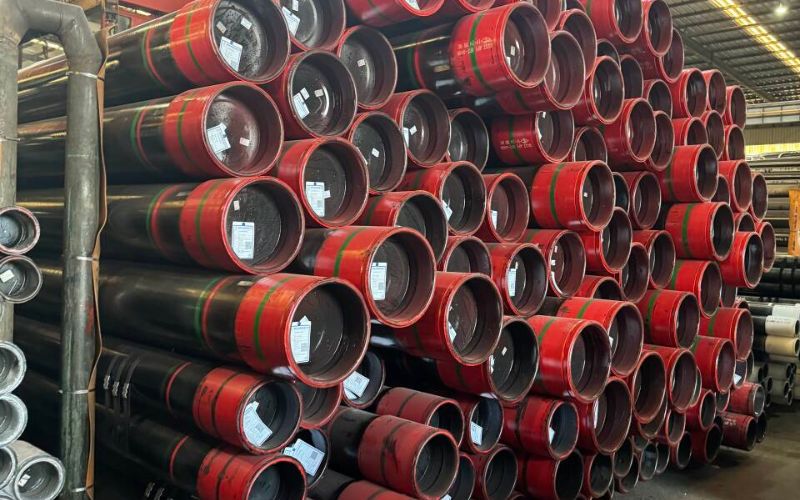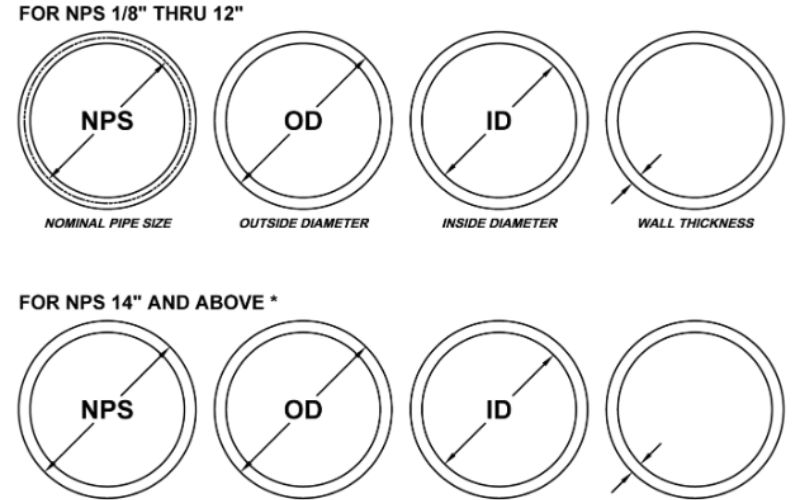Steel forms the backbone of modern infrastructure, while its durability is put to test by time, environment, and stress. Here galvanizing is the process that confers the steel with supreme strength and corrosion-resistant properties. Whether you are deep inside the construction industry, a manufacturer seeking new and better cost-efficient production methods, or just two bits looking at how steel structures last through the ages, hot dip galvanizing and zinc coating are worthy causes of study. This complete guide thoroughly looks at the processes and science, plus the benefits and applications of galvanizing, providing you with a wider perspective of how it keeps steel from rusting and being degraded. Get ready to find out why galvanized steel is trusted from gigantic bridges down to backyard projects.
Understanding the Galvanising Process
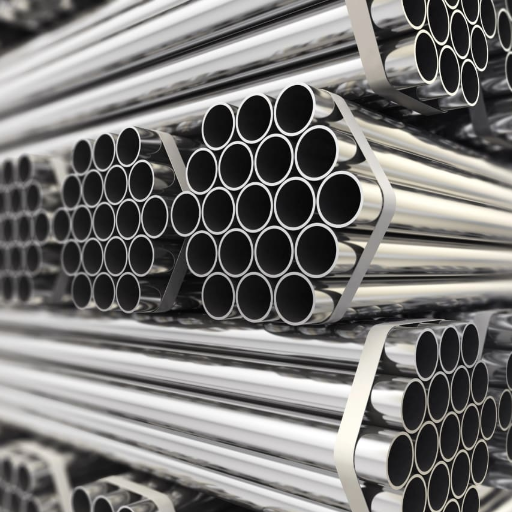
Hot dip galvanization is a technique that safeguards steel from corrosion by coating it with zinc. In this process, first, the steel is cleaned of all impurities to allow proper adhesion. Then it is immersed in a molten zinc bath, whereby the zinc forms a metallurgical bond with the steel. A coating of zinc offers a physical barrier preventing moisture and oxygen from reaching the steel while the zinc layer promotes corrosion resistance for long periods. Sacrificially, zinc initiates corrosion in place of steel when the coating is compromised. This process is all but simple and extremely effective, thereby making galvanization a preferred method of enhancing steel structure life.
What is Galvanising?
Galvanizing is a very useful corrosion-protection method for the steel. There are numerous benefits that attract users from different sectors. One of them is longevity. It has been studied and observed that galvanized steel would resist rust and perform well for 50 years or more in most rural environments and may even last for 25 years in industrial or coastal environments that are harsher. Such a life expectancy cuts down maintenance costs considerably over time, and for large projects, it is definitely more economical.
Another strong argument for longevity is resistance to mechanical damage and total coverage. The hot-dip galvanizing process allows the zinc protection to cover all areas, even the hardest to reach, such as recesses and sharp corners. This uniform protection is necessary to avoid weak spots that put the substrate at risk of corrosion. In contrast, a drop of paint or brush might well stop short of these areas. Thus galvanized coatings are very tough and can bear mechanical damage from transit, installation, and repair work.
Due to their wide application and resistivity to corrosion, galvanized steels are used in several industries. Construction, which includes bridges, roofing, and structural frameworks, is the largest consumer, followed by energy infrastructure, which includes power pylons, wind turbines, solar panel mounts, and so on. The automotive industry uses galvanizing to ensure the longer life of vehicles by protecting structural components, and the agricultural and marine industries use galvanized steel for equipment and materials that withstand harsh environments.
Environmental benefits also cannot be overlooked as far as galvanizing is concerned. Since zinc is abundant and recyclable, the process offers the best sustainability. Once galvanized steel reaches the end of its life cycle, both the steel and the zinc can be recycled without any deterioration, thereby contributing to a circular economy.
In the combined balance of durability, economy, and ecological sustainability are the reasons why there is still a growing demand and acceptance for the use of galvanizing in the fight against steel corrosion worldwide.
The Importance of Zinc in Galvanising
Zinc is at the core of the galvanizing process, acting as a barrier protecting steel from corrosion. This protection is twofold: it works first by making the corrosion process difficult. The zinc coating provides a physical barrier preventing moisture and oxygen from interacting with the steel surface, and secondly, the coating protects the steel electrochemically in a sacrifice manner: if the coating is ruptured, zinc surrounding the rupture will corrode first and thus will protect the exposed steel. Thus, with two working principles, galvanizing combines to produce one of the most long-lasting products known to men: galvanized steel, lasting for about 50 years or more, depending on its environment.
In addition, it provides zinc for corrosion resistance cheaply and efficiently. Research shows that galvanized steel requires very little maintenance during its service life and thus considerably reduces the cost of maintaining the structure compared with maintenance by other anticorrosion methods. The International Zinc Association’s report confirms that hot-dip galvanizing can produce a uniform coating of durability and maintainability even in hostile environments such as marine or industrial settings.
Richer zinc increases further into the galvanizing process by its abundance and recycled nature. Each year, more than 14 million tons of zinc are produced in the world, about 30% of which are recycled. Thus, it guarantees a steady supply as well as conforms to global sustainability concerns through lesser extraction of resources and less energy consumption.
The perfect amalgamation of performance, affordability, and sustainability has earned the place of zinc as an unmatchable component in the galvanizing process so that infrastructure and industrial projects around the world meet modern-day standards of durability and functionality.
Overview of Hot Dip Galvanizing Techniques
Hot dip galvanizing is one of the most common methods of protecting steel or iron from corrosion by means of applying a zinc coating. In this process, the metal is dipped into a bath of molten zinc, assuring a very tough and uniform coating that is chemically as well as mechanically bonded to the surface of the metal. Over many years, the process has been improved for optimum efficiency and quality while considering environmental issues.
The process of hot dip galvanizing is generally divided into three major stages: surface preparation, galvanizing, and inspection. Surface treatment is a key step in preparing the steel for proper adhesion of the zinc coating. It includes degreasing, pickling to remove any rust or mill scale, and rinsing with flux solution to prevent any oxidation prior to immersion. At the galvanizing stage, the prepared steel is immersed in molten zinc maintained at about 840°F (450°C), the zinc being firmly metallurgically bonded to the steel surface. Inspection is the final step post-galvanizing, wherein measurements of coating thickness and uniformity are conducted in accordance with ASTM A123, ISO 1461, or other standards.
Industrial studies show that hot dip galvanizing significantly enhances durability. A galvanized steel structure is essentially maintenance-free for 50 or more years depending on the environment; some areas even cite service life well above 75 years in mild surroundings. Nowadays, further developments have enabled the control of zinc layer thickness with much greater precision, thus optimizing material consumption and performance. Average coating thickness might range from 50 to 150 microns according to the needs of the application.
From an economic standpoint, an environmentally safe protection method, with numerous instances of green technology since zinc coatings are reusable and recyclable, hot dip galvanizing never ceased to be the go-to method for steel protection in industries such as construction, automotive, and utilities. It is a modern engineering marvel and yet probably the most trusted form of anticorrosion solution.
Benefits of Galvanised Steel
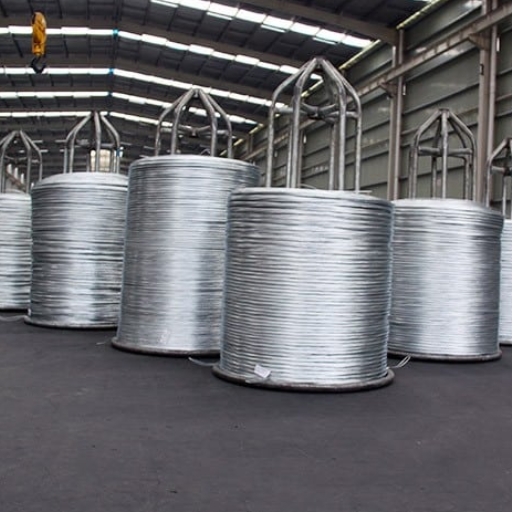
- Excellent Corrosion Resistance: A layer of zinc protects steel from rusting and corrosion for very long periods, especially when in harsh environments.
- Low Maintenance: After installation, little upkeep is required with the galvanised steel, thus reducing costs and effort on maintenance.
- Durability: The zinc coating protects the steel from wear, granting it a longer warranty period as compared to simple untreated steel.
- Cost-effectiveness: The cheapest option to choose for a balanced life duration because of little maintenance cost attached.
- Eco-Friendly: Galvanised steel is environmentally friendly, inasmuch as its zinc coating can be reused and recycled.
Hence, industries looking for tough and more greener materials can always go for a pretty concrete solution in galvanised steel.
Corrosion Resistance and Longevity
Galvanized steel is especially known for its best corrosion resistance and thus is chosen wherever moisture, chemicals, or harsh weather conditions may find abundant entry. The zinc barrier ensures that moisture and oxygen are stopped, preventing rust and decay on steel. It has been documented that galvanized steel can survive more than 50 years in moderate rural environments or even 25 years under extremely industrial and coastal environments without any maintenance. Such uniqueness in lifespan is probably due to the uniform zinc layer coating, which, when compared to steel itself, corrodes at a much slower rate.
The few years have witnessed various enhancements to the galvanization process, which have improved the durability of this material further. Some innovative implementations of the process include applying thicker coatings or using special alloys for protection in aggressive atmospheres. The zinc layer exhibits “sacrificial protection,” so once the coating is damaged, the zinc around the damaged site will corrode and protect the exposed steel. These advantages make galvanized steel a very cost-effective and reliable material that is used in a wide array of applications against construction and infrastructure through automotive to marine industry.
Cost-Effectiveness of Hot Dip Coating
Hot dip coating, being cost-effective due to longevity, durability, and low maintenance, can work wonders in guaranteeing that the structure will barely need repairs over the years. According to research, galvanized steel structures can last more than 50 years in rural areas and between 20 and 25 years in rough industrial or coastal environments prior to needing major maintenance. This longer life means less frequent replacements and repairs and lower costs in the long run.
Moreover, the initial investment for hot dip coating is rather high but is quickly paid for when working in mass applications. For instance, the process is able to uniformly and consistently cover structures, with very little waste being produced in addition to its weight in the metal, unlike other methods of protection. Compared with epoxy coatings, which usually have to be applied multiple times with reapplications in between, galvanizing gives you one strong layer that safeguards against corrosion as well as light mechanical abuse.
The recyclability of the materials is another topic of concern. Since zinc (the foremost element in the galvanizing process) can be recycled completely, this process benefits both financially and environmentally. For such industries as construction and infrastructure, the sustainability proposition provided by galvanizing will add quite a bit of value in meeting stringent environmental compliance regulations, which, in turn, may further cut costs in the long run.
Combining all these factors makes hot dip coating an economical and competitive choice for industries that straddle an early heavy investment with a long period of structural integrity and resulting smaller life-cycle costs.
Environmental Impact and Sustainability
Hot dip coating has huge benefits for the environment and is being pursued by industries with sustainability in mind. For one, they have some durability. Depending on its environment, a galvanized coating may protect steel structures for anything between 50 years to 100 years, considerably reducing the maintenance or outright replacement of existing steel solutions in a short time span. Increase durability means a decrease in the consumption of resources over time, which aggrandizes the sustenance goal wherein more waste generation shall be minimized.
Besides being good on the sustainability front, the raw materials involved in hot dipping–like zinc–are completely recyclable. Zinc is recycled in a circular economy model where each recycled batch maintains its properties indefinitely throughout recycling. Presently, about 30% of global zinc production is accounted for through recycled zinc, which enhances resource efficiency and minimizes the environmental footprint of production.
Manufacturers have been striving for greener and energy-efficient options in applications of galvanizing. Many of them have established fume capture systems to reduce emissions; they also carry out their production using natural gas, reducing greenhouse gases in production. Being rather less in energy consumption and environmental impacts than other coating methods, hot dip galvanizing remains a green choice for protective coatings.
Durability, recyclability, and cleaner industrial practices jointly make hot dip coating an environmentally responsible choice to address conservation concerns and industry-wide aspirations for green alternatives.
Common Applications of Galvanised Steel
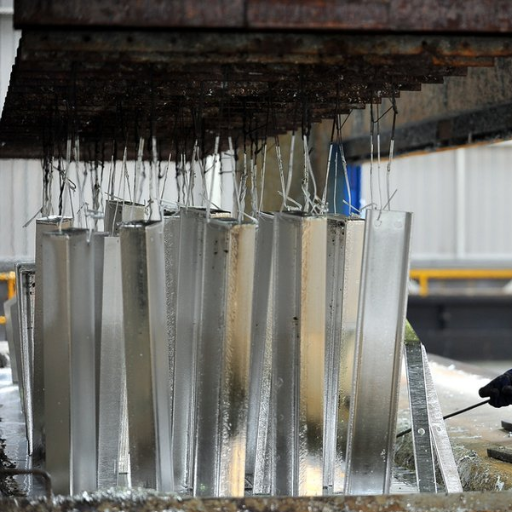
Common applications of galvanized steel include construction, automotive, agriculture, solar, and industrial frameworks.
| Application | Details |
|---|---|
|
Construction |
Frames, Bridges |
|
Automotive |
Car Parts |
|
Agriculture |
Equipment |
|
Solar |
Panels |
|
Industrial |
Beams, Walkways |
Construction and Infrastructure
Galvanized steel is really key in the construction and infrastructure sector due to its unmatched power and corrosion resistance. It finds its applications in structural frameworks, roofs, bridges, and reinforcement where service life is very much essential. For example, galvanized steel beams and columns form one of the main materials for practically building support for modern skyscrapers that last over time and require little maintenance.
Industry data shows that the global galvanized steel market will reach a valuation of over $283 billion by 2027 owing to the lime light infrastructure projects demand worldwide. These steels comprise bridges and highways where environmental conditions are harsh and comprise exposure to humidity and pollutants when situated in coastal or industrial areas. Moreover, steel components are also popular in light-gauge steel framing systems for residential and commercial buildings, which guarantee faster assembly times with cost efficiency.
Being recyclable in its nature, galvanized steel also advances sustainable construction methods, boosting the present activities that aim to lessen the carbon footprint in the building sector. Building codes are increasingly favoring galvanized steel materials on grounds of their durability, meeting the established sustainability standards without any absence of performance. That makes this steel a relevant material moving into the future of worldwide infrastructure.
Agricultural Equipment
Agricultural equipment has become an expedient tool used in modern farming to enhance the ambit of efficiency, productivity, and sustainability. From tractor systems to combines, and precision irrigation systems, the progression of agricultural machinery has distinguished farming from its antiquated practices. For example, a modern combine harvester provides myriad functions for harvesting, threshing, and grain separation, shortening time and labor for crop production greatly. Based on a report, increasing mechanization and acceptance of newer technologies are driving the agricultural machinery market to hit the mark of $275 billion by 2030.
Precision machinery includes GPS-guided tractors and drones with sensors that allow farmers to assess crop health, soil conditions, and water use optimally. By doing so, it prevents wastage of resources and increases sustainable agricultural practices which, today, have become crucial for food security. On the other hand, electric and autonomous machinery of the farm are being developed further and offer the potential to reduce operational costs and greenhouse gas emissions. With this, the agricultural equipment continues to cement its position in producing for a growing population in an ecologically conscious way.
Automotive Industry Uses
The industry applied novel technologies for the goal of changing manufacturing towards sustainability, enhancing efficacy, and cutting down on environmental footprint. AI and machine learning have become a significant addition to the design and production of vehicles. Such technologies contribute to predictive maintenance, streamline working conditions on the assembly line, and carry out quality checks, so shortening the unwelcome downtime and the costs associated with it.
EVs continue to destroy markets. The change has been propelled by government incentives and burgeoning charging infrastructure, with consumer appetite also stirred for sustainable transport. On top of that, autonomous driving technology is evolving at a hurried pace, with substantial investments being made by key players in achieving higher lone autonomy in vehicles for the purpose of improving safety and relief from traffic congestion.
The industry is using lightweight materials like high-strength steel and carbon fiber for better fuel efficiency and performance. These advances in tandem with battery technology are taking the automotive industry to the next level: toward sustainability and emission cuts. As the automotive industry keeps evolving, technological infusion will see to it cars are cost-effective tailor-made for future mobility.
Challenges in the Galvanising Process
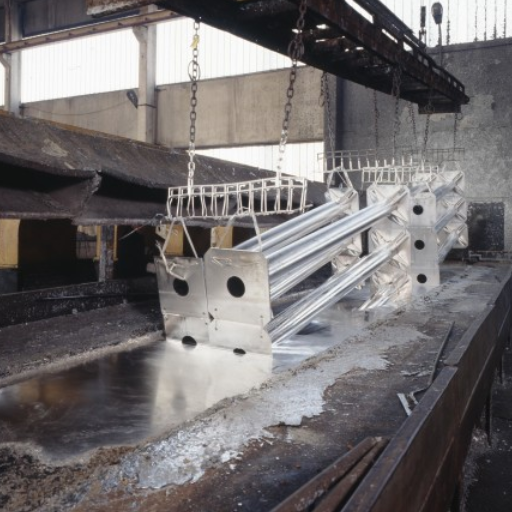
Challenges in the galvanizing process include surface contamination, improper handling, temperature issues, coating defects, and adhesion problems.
| Challenge | Details |
|---|---|
|
Contamination |
Surface Issues |
|
Handling |
Damage Risk |
|
Temperature |
Process Errors |
|
Coating Defects |
Bare Spots |
|
Adhesion |
Poor Bonding |
Surface Preparation Issues
Surface preparation in galvanizing is vital for ensuring the best-quality coating and for its durability. Faulty preparation leads to coating defects, some of which are uneven coatings, poor adhesion, or even total coating failure. Sometimes the preparation gets interjected by contaminants such as grease, oil, or surface oxidation on the metal. Such contaminants are basically zinc repellants with the result that the galvanized layer loses its efficacy.
According to recent data, about 3/4th of all coating failures in galvanizing arise as a result of surface preparation not done properly, hence casting an importance on it. Some measures taken to counter these situations involve degreasing, pickling, and fluxing, all of which prepare the surface by removing impurities so that zinc can successfully adhere. Degreasing wipes out organic surface contaminants; pickling washes off rust and mill scale with the aid of acids; fluxing maintains the surface clean until the galvanizing occurs.
Surface preparation will directly contribute to the coating’s good performance and upkeep, saving farther costs in the future. New developments in pre-treatment chemicals and methods, such as green environmental cleaning agents, automated pre-treatment systems, etc., are really putting up industries to cope better with the challenges of preparation with as little environmental impact as possible. Constant surveillance and quality checks during these stages of preparation yield a better success rate for durable and high-quality galvanized coatings.
Quality Control in Hot Dip Galvanizing
Quality control is among the critical components of the hot dip galvanizing process. It makes sure that the coating passes the industry standards and offers lasting protection. A rough inspection of raw materials is performed to determine if the surface conditions are non-contaminated with matters such as rust, oils, or scale, which could compromise coating quality. The key performance parameters measured are coating thickness, pull-off adhesion strength, and uniformity of spread.
With recent technological developments, galvanized layers can now be accurately measured without inflicting damage upon the material, using NDT methods such as magnetic thickness gauges. Industry standards like ASTM A123/A123M for structural steel and ISO 1461 cover the acceptable thickness ranges of coatings, which may vary from 45 microns for thin materials to higher than 85 microns for thick components, with variations depending on the composition of the steel and its intended use.
Advanced simulation software is also employed by some manufacturers to predict galvanizing results based on steel composition, immersion times, and bath temperatures. Analysis of data gathered during production helps identify potential problems beforehand, allowing for adjustments that improve coating performance. Further, the final-stage inspections include immersion testing, bend testing, and visual inspection for defects such as bare spots or excessive dross inclusions.
Thus, with the advent of comprehensive quality control, manufacturers assure that the products adhere to standards and provide extended service life, qualities that have made galvanizing a dependable and sustainable corrosion protection method.
Common Defects in Zinc Coating
Despite the effectiveness of the galvanizing process, certain defects in zinc coatings can occur, affecting both the aesthetics and performance of the final product. Understanding these common issues is essential for improving quality control and ensuring long-lasting corrosion protection.
- Bare Spots
Bare spots are uncoated areas on the surface of steel, often caused by improper surface preparation or contamination of the steel. These defects leave the substrate vulnerable to corrosion and significantly reduce the durability of the coating. Studies reveal that inadequate cleaning can lead to incomplete adhesion between the zinc layer and steel, emphasizing the importance of processes like acid pickling and abrasive blasting.
- Dross Inclusion
Dross inclusions appear as rough, uneven patches on the surface of the coating, resulting from partially fused zinc-iron particles. These inclusions are typically caused by poor control of bath composition or excessive agitation during the galvanizing process. Research highlights that maintaining optimal zinc purity—99% or higher—can greatly reduce dross formation.
- Over-Thickness
Over-thick coatings arise when zinc accumulates excessively in specific areas. While thicker coatings may seem advantageous, they often compromise flexibility, leading to cracking or peeling under stress. According to recent standards, coatings exceeding the recommended thickness, typically between 70 and 200 microns depending on the application, are more prone to failure in dynamic environments.
- Pinholes and Pores
These small imperfections form due to trapped gas during the coating solidification process. Pinholes compromise the continuity of the coating, allowing moisture and air to penetrate, which can accelerate localized corrosion. Advanced techniques such as controlled cooling rates and thorough surface preparation help minimize this defect.
- Flaking and Peeling
Flaking occurs when the zinc layer does not bond adequately to the steel, often due to high levels of surface contaminants or poor metallurgical reactions. Data indicates that steel compositions with high levels of silicon or phosphorus are more susceptible, requiring careful material selection for critical applications.
By analyzing these defects and their causes, manufacturers can adopt targeted strategies to reduce their occurrence, such as refining pre-treatment processes, maintaining ideal bath composition, and employing precise coating thickness control. Addressing these issues not only strengthens the functional performance but also reinforces the aesthetic appeal essential for various applications.
Innovative Solutions and Trends in Galvanising
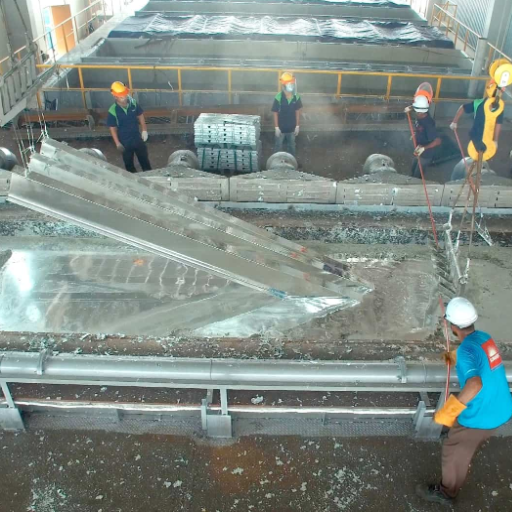
Innovative solutions and trends in galvanizing include nano-coatings, sustainable practices, advanced hot-dip techniques, eco-friendly coatings, and digitized systems.
| Trend | Details |
|---|---|
|
Nano-coatings |
Enhanced Corrosion |
|
Sustainable |
Green Practices |
|
Hot-Dip |
Advanced Tech |
|
Eco-Coatings |
Environmentally Safe |
|
Digitized |
Smart Systems |
Advancements in Galvanising Technology
I have seen the galvanising technology put through a drastic evolution over recent years, owing to the considerations of durability, efficiency, and green manufacturing. Advanced alloy coatings developed through forward-thinking research- like zinc-aluminum-magnesium systems- exhibit better corrosion resistance than traditional methods of galvanising. Moreover, the automation of processes and the real-time monitoring systems are injected into production lines so that quality is ensured and generation wastes reduced. These advancements strive to improve galvanised material performance while adhering to the industry’s agenda for more environmentally-friendly and efficient production.
Spray Galvanising: A Modern Approach
Spray galvanising, alternatively thermal spray galvanising, represents an innovative and versatile technique employed for corrosion protection of metal surfaces. Contrary to traditional galvanising, spray galvanising does not require immersion in molten zinc. Instead, zinc or zinc alloy coatings are sprayed onto surfaces through special spray equipment, making the process apt for coating big, irregular-shaped, or previously erected structures.
One of the major advantages of spray galvanising is that it is flexible. Protective coatings can be applied in situ thus eliminating disassembly or transportation of oversized components. The coating thickness can be controlled with some degree of precision, ranging generally between 50 and 200 microns, depending on protection requirements. Recent studies indicate that about an 85-micron zinc coating may provide about 20 years of corrosion protection in moderately aggressive industrial atmospheres.
Economic benefits are sought from the thermal spray process by applying zinc where it is required, thus saving materials and reducing waste. Further improvements in thermal spray technology made it possible to achieve higher rates of deposition, better adhesion of the coating, and thus better performance and cost-efficiency.
Other studies reveal that spray zinc-treated structures prove very durable in harsh environments, such as coastal or industrial ones where high humidity and pollutants rapidly accelerate corrosion. The versatility and performance make spray galvanising increasingly recognized as a contemporary corrosion protection system for application in construction, infrastructure, and marine sectors.
Future Trends in Metal Coating
Significant developments in intelligent coatings are shaping the future of metal coatings. Smart coatings are designed to embody a range of functionalities besides corrosion prevention, including self-healing, environmental response, or even energy efficiency. For instance, the need in automotive, aerospace, and construction industries is predicted to push the global smart coatings market beyond $10 billion by the year 2027.
An even more promising innovation is self-healing coatings that can autonomously repair minor damage, thereby extending the service life of metal structures and reducing maintenance costs. These coatings contain microcapsules filled with healing agents that are released upon damage and standardly heal the cracks or abrasions.
In addition, antimicrobial coatings are transforming industries such as healthcare and food processing by killing germs on surfaces that are shared by many people. In doing so, these coatings improve safety while also extending the service life of structures by reducing biocorrosion.
Environmentally conscious coatings are also gaining favor. Research and development activities related to bio-based coatings that use natural materials such as chitosan or plant derivatives are being conducted to be in line with rigid sustainability norms and to lessen dependency on volatile organic compounds (VOCs).
In light of the rapid technological advancements, there is no doubt that such smart, environmentally friendly coatings will completely evolve the metal coating industry to fit the mold of present-day needs for efficiency, utility, and consideration of the environment.
Reference Sources
1. Quality of Zinc Coating Formed on Structural Steel by Hot-Dip Galvanizing after Surface Contamination
- Authors: J. Vontorová, Petr Mohyla, K. Kreislová
- Published: April 17, 2024
- Journal: Coatings
- Key Findings: This study evaluates the impact of surface contamination (from spray primer, adhesive label glue, and welding sprays) on the quality of zinc coatings formed during hot-dip galvanizing. The results indicate that contamination significantly affects the coating quality, with some contaminants leading to complete absence of the zinc layer.
- Methodology: The authors used optical microscopy, glow discharge optical emission spectroscopy (GDOES), adhesion tests, and condensation humidity tests to analyze the galvanized samples(Vontorová et al., 2024).
2. Hot-dip galvanizing process and coating corrosion behavior of Fe-Mn-Al-C steel
- Authors: Huasheng Zhou, Lizhi Tang, Xiaofeng Zhang, Yong Yang
- Published: June 1, 2024
- Journal: Surface Engineering
- Key Findings: The study investigates how different zinc bath temperatures and immersion durations affect the corrosion behavior and coating quality of Fe-Mn-Al-C lightweight steel. The optimal conditions were found to be at 490°C for 3 minutes, which provided the best corrosion resistance.
- Methodology: The authors characterized the coatings using scanning electron microscopy and energy dispersive X-ray analysis, and conducted neutral salt spray corrosion tests(Zhou et al., 2024, pp. 730–741).
3. In-Situ Wettability Analysis of Al Coating Influence on Hot-Dip Galvanizing Properties of Advanced High-Strength Steels
- Authors: Srinivasulu Grandhi, Kwang-Hyeok Jin, Minsu Kim, Dong-Joo Yoon, Seung-Hyo Lee, Min-Suk Oh
- Published: April 10, 2024
- Journal: Archives of Metallurgy and Materials
- Key Findings: This research focuses on how aluminum interlayers affect the wettability of zinc on advanced high-strength steels during hot-dip galvanizing. The presence of an Al interlayer significantly improved the wettability and adhesion of the zinc coating.
- Methodology: The study employed physical vapor deposition to create Al interlayers and measured the contact angles and spread widths of molten zinc on the steel substrates(Grandhi et al., 2024).
Frequently Asked Questions (FAQs)
What is the hot-dip galvanising process?
The hot-dip galvanising process involves dipping steel parts into a molten bath of zinc at approximately 450 °C. This creates a thick, protective layer of zinc that adheres to the underlying steel, providing superior corrosion protection against rust and environmental damage.
How does zinc act as a protective coating?
Zinc acts as a protective layer on iron or steel components by providing cathodic protection. When exposed to corrosive environments, zinc oxidizes preferentially to the underlying steel, effectively sacrificing itself and preventing rust formation on the steel beneath.
What are the benefits of using hot dip galvanised steel?
Hot dip galvanised steel offers numerous advantages, including excellent rust protection, durability, and a long service life. The protective zinc coating helps to extend the lifespan of steel products by preventing corrosion and ensuring that the steel underneath remains intact.
Can you explain the nature of the zinc coating?
The nature of the zinc coating formed during the hot-dip galvanising process is a zinc-iron alloy, which is bonded to the base metal. This coating provides a robust protective layer that resists wear and tear, while also enhancing paint adhesion when further finishing is required.
What types of steel products can be galvanised?
Various steel products can be galvanised, including sheet metal, steel sheets, and complex steel parts. The versatility of the galvanising process allows for a wide range of ferrous metals to be coated, ensuring they are protected against corrosion.
How does cold galv spray compare to hot-dip galvanising?
Cold galv spray is a type of zinc coating applied at room temperature, which can provide some level of rust protection. However, hot-dip galvanising offers a thicker, more durable coating due to the molten zinc bath, resulting in superior corrosion resistance compared to cold sprays.
What role does the acid pickling process play in galvanising?
The acid pickling process is used to prepare steel surfaces before galvanising. This step removes any oxide or rust from the surface, ensuring that the protective layer of zinc adheres properly to the steel, enhancing the overall effectiveness of the galvanising process.
Do hot-dip galvanised steels require a top coat?
While hot-dip galvanised steels have a strong protective zinc coating, applying a top coat can enhance aesthetics and provide additional protection against environmental factors. The combination of zinc and paint can improve longevity and performance, especially in harsh conditions.
What happens to the zinc after galvanising?
After galvanising, the zinc forms a protective layer that eventually develops a patina, predominantly consisting of zinc carbonate. This layer further enhances the protective properties and helps to maintain the integrity of the steel underneath over time.



